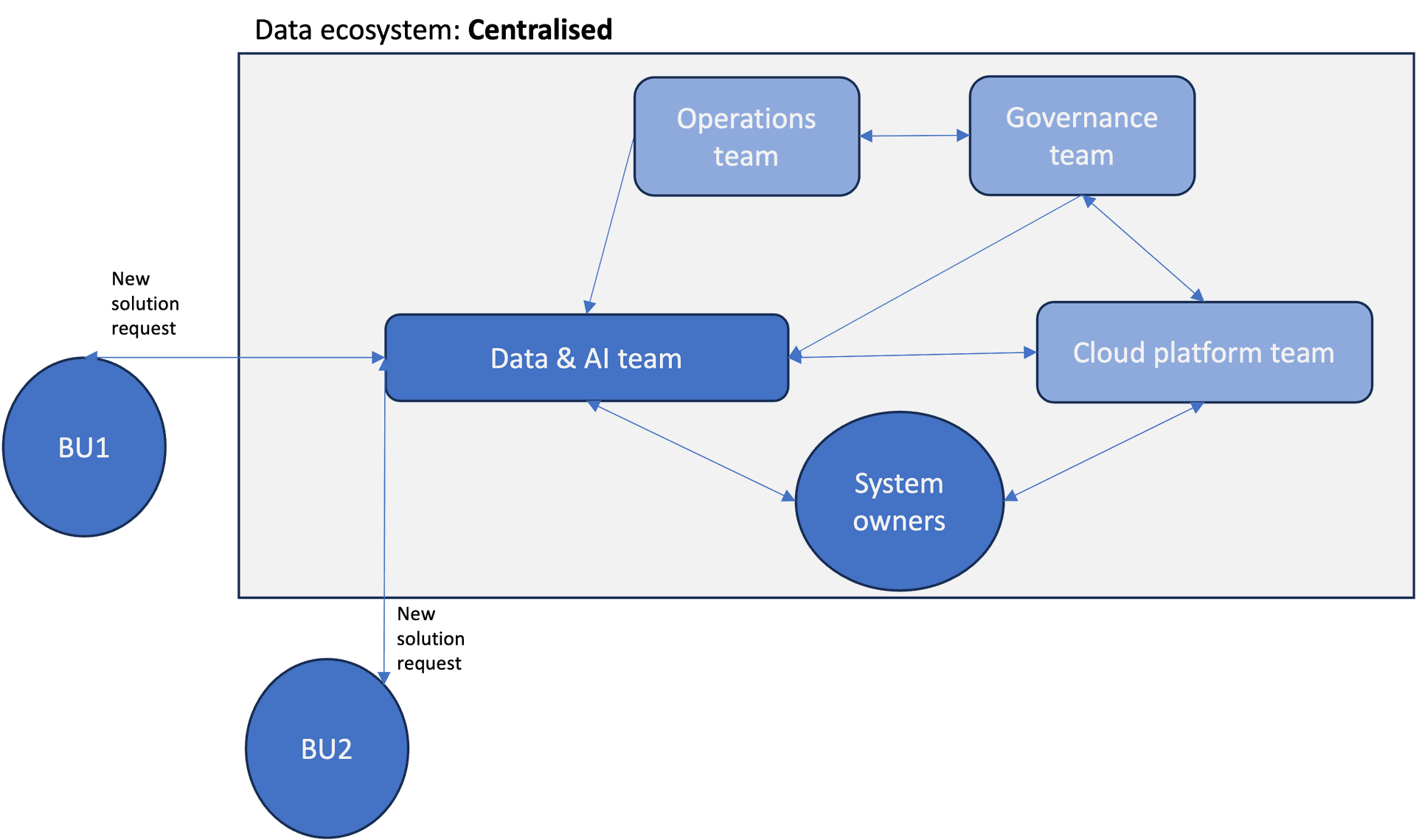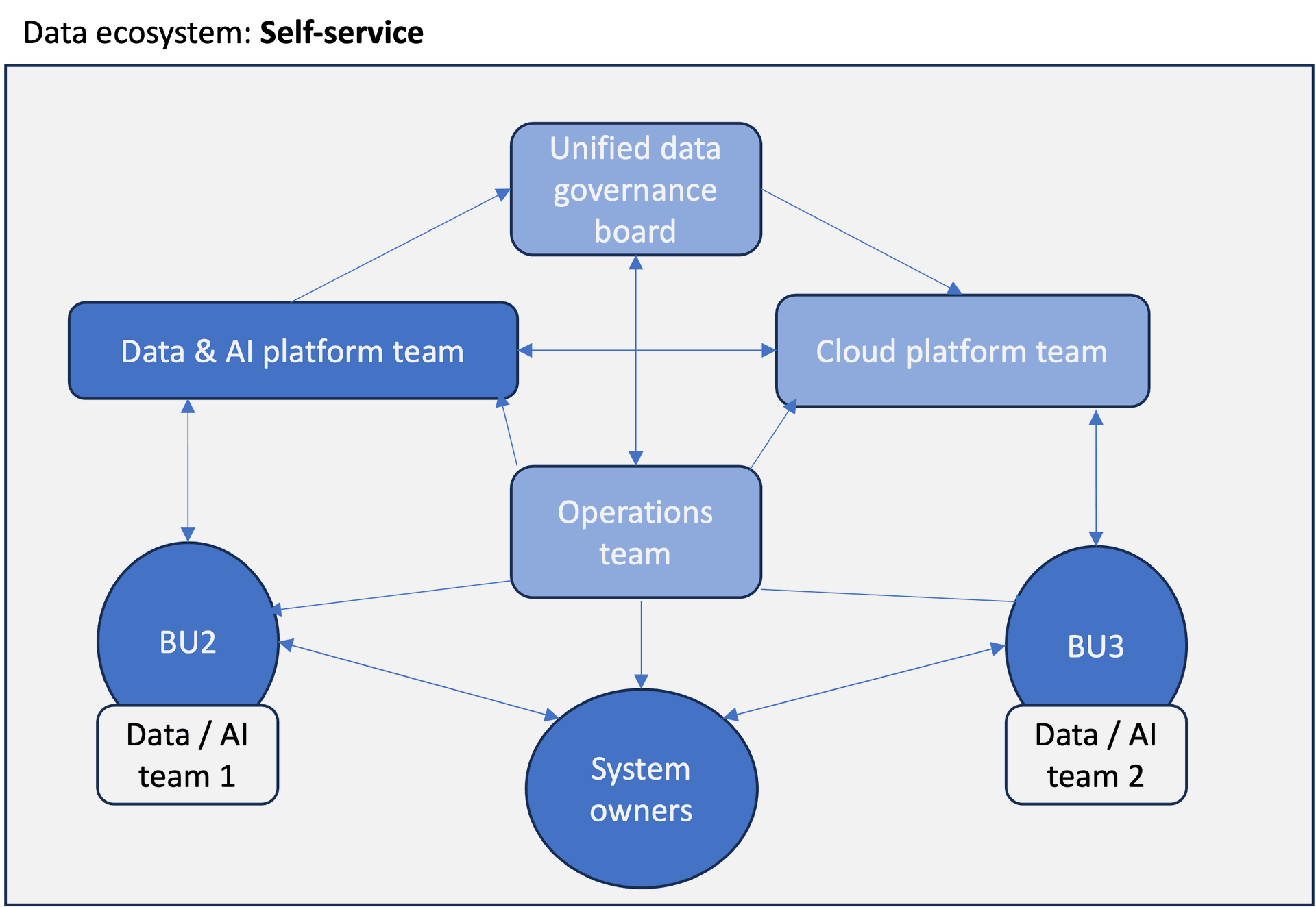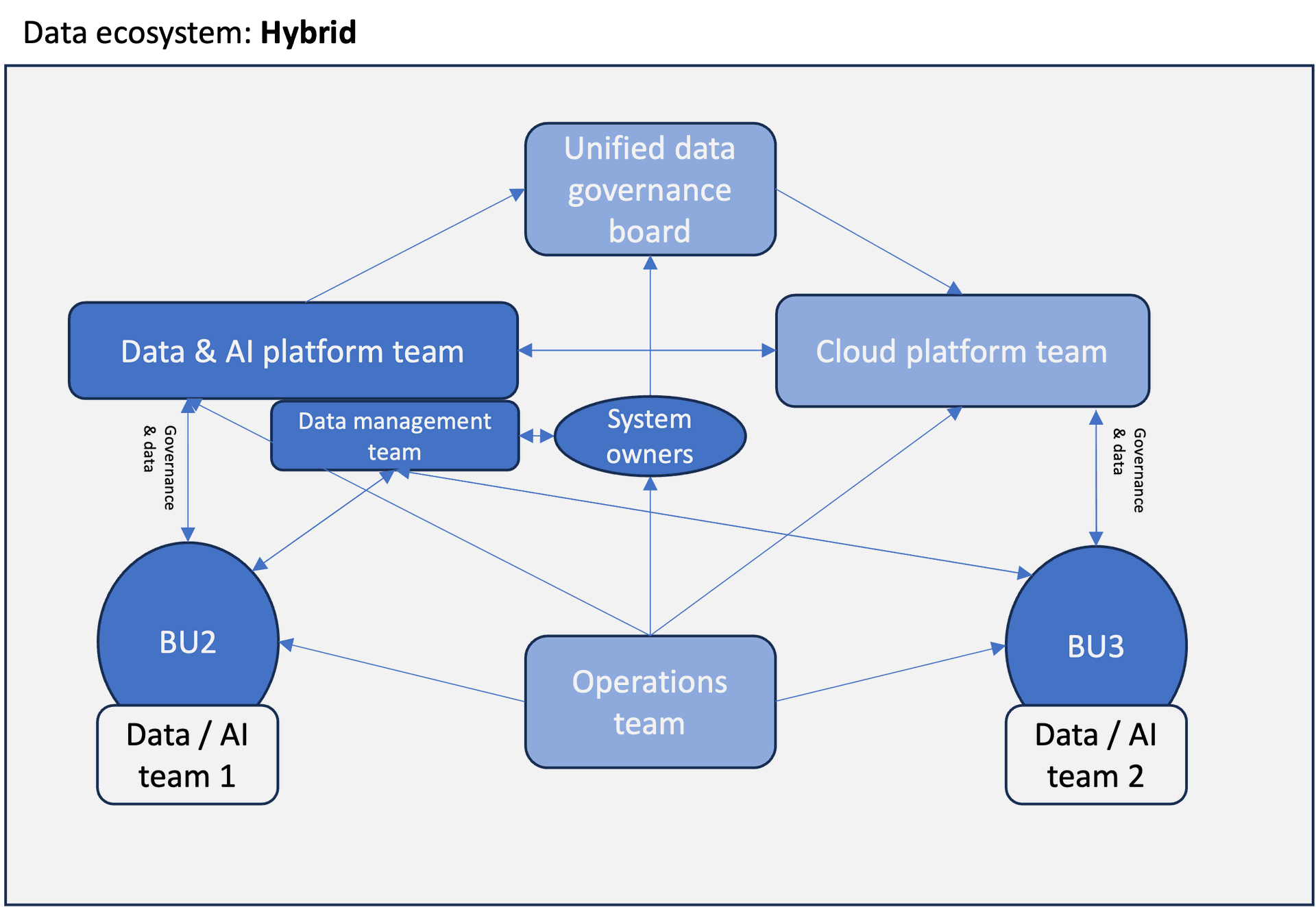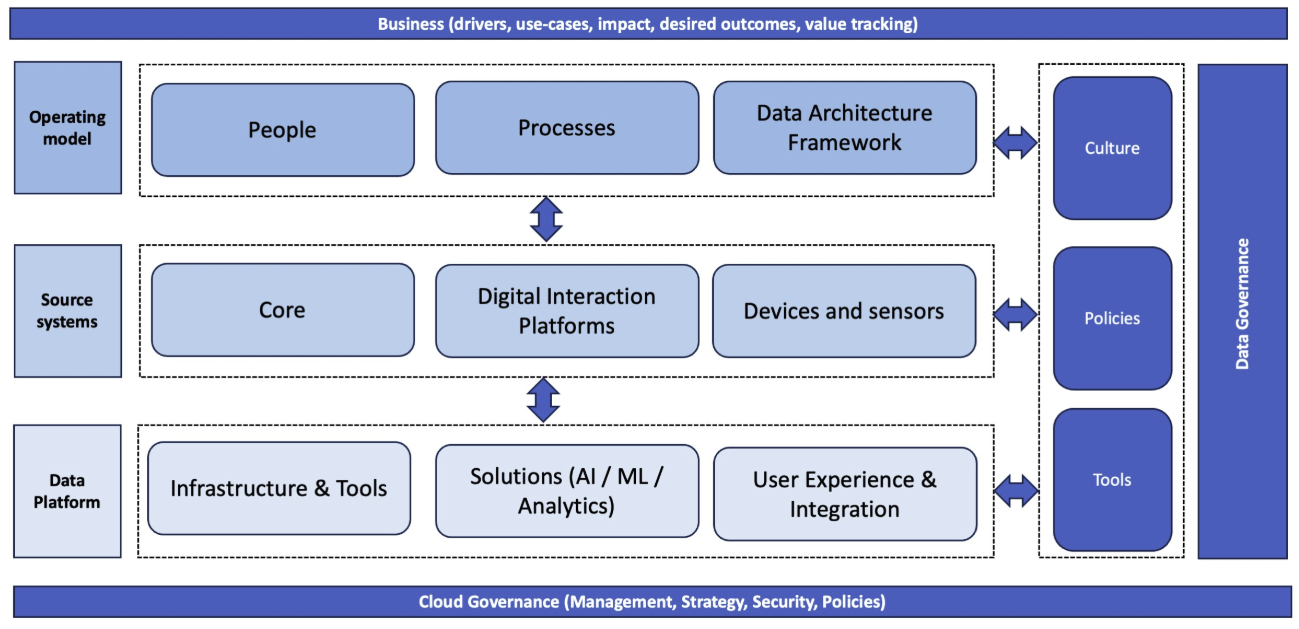Modern companies vs data ecosystem
We współczesnym świecie biznesu ekosystem danych In the modern business landscape, the data ecosystem is pivotal. It comprises various elements like the business layer, which links data initiatives to organisational outcomes, and the source systems, which are the bedrock of the data flow. The integrated architecture of the data platform streamlines data operations, ensuring seamless data consumption, governance, and management.
Overlaying this is the framework of data governance and cloud governance, both critical for standardised, secure, and efficient data handling..
Delve into the essentials of establishing and optimising your data ecosystem, ensuring it not only manages vast data efficiently but also elevates your business to new heights by extracting real business value from every byte.
Operating models for data ecosystem
Centralised
Self-service
Hybrid
In data ecosystem operating model is just a core. Just as with data platforms, organisations sculpt their operating models around specific needs, structural nuances, and their stage in the data maturity lifecycle. These models spell out the accountability metrics for data management, the genesis of solutions, supervision of the ecosystem, and adherence to governance norms.
Centralised model in data ecosystem

much like the centralized data platform model, a dedicated team is assigned for curating solutions and overseeing the entire data ecosystem. This model provides a structured methodology and tight control over data processes. However, it can be rigid and might not offer the malleability needed by individual units in an organisation.
Self-service model in data ecosystem

In this decentralised model, while a core team supervises the ecosystem, the crafting of solutions and data management is delegated to individual business units. This fosters agility and customised solutions, all under the umbrella of company-wide governance. It champions data literacy and encourages units to architect and steward their data solutions.
Hybrid model for data ecosystem
An amalgamation of centralised and self-service models, this approach centralizes data provisioning and ecosystem management. Nonetheless, specialised solutions, be it AI models or reports, are steered by business units armed with their data specialists and in-line with universal governance.
Which operating models should you choose for your data ecosystem?
Selecting the right operating model for a data ecosystem depends on an organization’s size, level of complexity, culture, and data maturity. It is essential to consider these factors and analyze the strengths and weaknesses of each approach when designing a data management strategy.
Choosing the right model means aligning the organization’s unique characteristics with the benefits and limitations of each option. Only then can a coherent and effective data strategy be built—one that meets real business needs and supports reporting automation, data integration, and strategic data utilization.
Model | Cons | Pros |
Centralised | - Constrained adaptability to cater to unique departmental requirements. - Potential for bottlenecks because of centralised authority. - Might strain resources for the central team. | - Streamlined data management and solution development. - Strong control with reinforced governance. - Elimination of redundant efforts, boosting efficiency. |
Self-service | - Potential to spawn data silos with units operating in silos. - Upholding consistent quality can be challenging with dispersed operations. - Amplifies intricacy with multiple teams navigating data management. | - Enhanced flexibility to business departments. - Promotes swift adaptability to shifting business needs. - Advances data literacy throughout the organisation. |
Hybrid | - Intricacies in management arise due to divided responsibilities. - Overlapping roles may sow confusion. - Possibility of uneven methodologies across departments. | - Marries the best of standardisation and adaptability. - Augments collaboration between the nucleus team and business units. - Conforms to the diverse needs of the organisation. |
Would you like to adopt an operating model for data ecosystem?
Contact us, we will reply in 24 hours!
